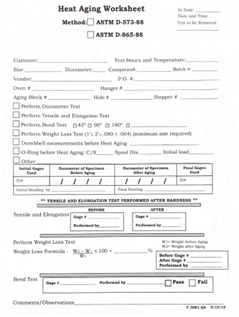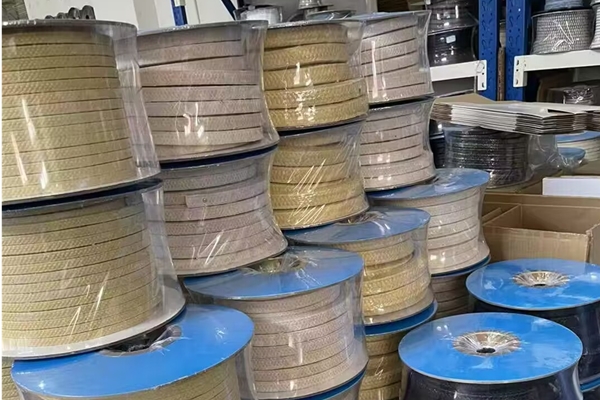Elastomer testing can be divided into three categories:
- Raw material testing: the minimum required level of testing materials or products to ensure acceptable quality levels
- Process test: determine the process conditions and curing perimeter of the mixed compound
- Performance test: characterize the service life of elastomer parts

Although the performance test method may not give an exact correlation with the performance of the infield service, the results ensure the industry’s quality requirements and contribute to the development of new rubber compounds. Depending on the application, rubber products must be able to withstand the deterioration of physical properties over time caused by environmental factors such as oxidation, heat, and fluid exposure.
When testing the effect of heat exposure on rubber compounds, place the vulcanized rubber sample in a heating environment at a known temperature and perform the test within a specific time interval, and then determine its physical properties. Common characteristics evaluated during heat aging include the use of a tensiometer to measure stress-strain characteristics, such as tensile strength and ultimate elongation-the maximum tensile stress and continuous tensile stress applied to the specimen when the specimen is broken The elongation at break under action.
Durometers can also be used to measure hardness, or the resistance of a rubber sample to indentation. By calculating the change in physical properties during aging, and comparing the performance test results with the original unaged compound, it provides a method to evaluate the performance characteristics of rubber under specific accelerated conditions. The adjustment of polymer structure, molecular weight, composite composition, filler, curing system, time and temperature directly affect the performance of the material and its response to environmental exposure.
1. Method
Before starting any test, there should be at least 24 hours from the completion of the vulcanization of the sample to the beginning of each aging interval. Unless otherwise specified, the deterioration of rubber samples using heat aging shall be carried out in accordance with ASTM test method d573. First prepare at least three standard dumbbell-shaped specimens as described in ASTM test method D 412. When making dumbbell samples, measure and record the hardness of each sample, as well as the median value of the three thickness measurements used to evaluate the tensile strength and ultimate extension of the dumbbell samples after the test interval.
ASTM D-412 cutting die and dumbbell test points can be seen in Figure 1. At the end of the heat aging test, the dumbbell samples were taken out of the oven, cooled to room temperature on a flat surface, and allowed to stand for at least 16 to 96 hours before measuring the physical properties.

2. Device
Once all the pre-measured properties are recorded, the sample is placed in the aging instrument accordingly. The dumbbell samples prepared for heat aging are clamped in a test hanger and placed in an oven preheated to the test operating temperature. The suspension device and oven are shown in Figure 2 below.

After the thermal aging interval is completed, the sample is cooled to room temperature, and then its hardness is measured. Next, clamp the dumbbell between the two wedge chucks to prepare the sample for the tensiometer. The test machine is calibrated. Once the test starts, the upper crosshead stretches the dumbbell until it fails. Each sample is measured at the same time with the reported median tensile strength and the sample batch with ultimate elongation. The MTS tensiometer used after the test is shown in Figure 3.

3. Calculate
The hardness change after immersing in the hardness unit is calculated by Equation 1:
Place:
ΔH = hardness change after immersion, unit,
Hi = original hardness before immersion, unit
Ho = hardness after immersion, unit
The change in stress-strain characteristics is expressed as a percentage of the change in tensile strength and ultimate elongation. Formula 2 is calculated as follows:
Place:
P = Percentage of property change
O = original value
A = value after aging
4. Result
When evaluating the results of the thermal aging test, the report must include the following:
- Type of aging test
- Aging temperature and time
- Rubber vulcanization data, if known, namely vulcanization time and temperature
- Date of original and final determination of physical properties
- The size of the sample
- All observations and recorded data on which the calculation is based
Figure 4 shows an example of a heat age test worksheet.

The measurements taken must be verified and initialized by the laboratory technician who performs each test.




